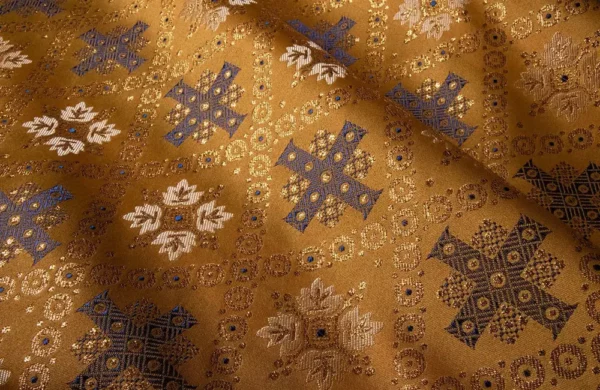
European brocade fabric is celebrated for its intricate patterns, luxurious feel, and ease of embroidery. Made from high-quality materials like silk, its production is labor-intensive, resulting in a higher cost. However, brocade’s durability and vibrant color retention make it a valuable investment. Unlike cheaper fabrics, which often fade and lack resilience, European brocade offers timeless elegance and exceptional quality.
Like this:
Like Loading...
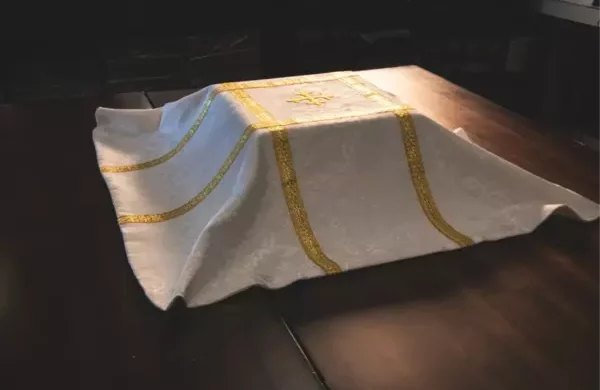
In this parable, a grand feast symbolizing the Kingdom of Heaven is prepared, but many decline due to worldly distractions. Yet, the host welcomes the marginalized, illustrating God’s boundless grace and inclusive nature. It’s a reminder that divine hope is always extended, regardless of our circumstances.
Like this:
Like Loading...
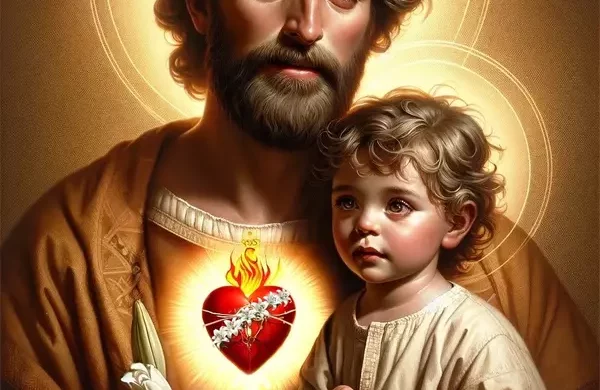
June, celebrated as Sacred Heart Month, honors the Sacred Heart of Jesus, symbolizing His love and sacrifice. Formalized in the 17th century, this devotion also venerates the Most Chaste Heart of Saint Joseph and the Immaculate Heart of Mary, representing purity and maternal love. The month encourages reflection and active devotion, inspiring deeper spiritual maturity and a closer relationship with the divine.
Like this:
Like Loading...
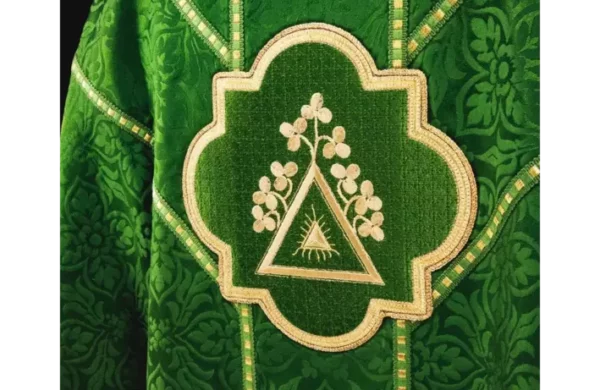
Chelmsford Church Silk Damask Fabric, known for its luxurious quality and soft touch, features a reversible design dating back to the 1920s. Versatile and elegant, it’s perfect for various liturgical projects, adorned with a small floral motif for detailed hand embroidery.
Like this:
Like Loading...
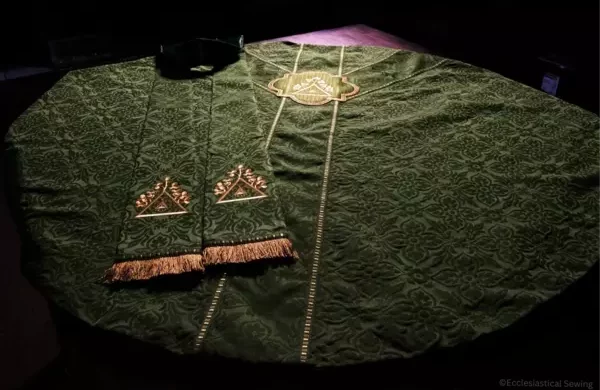
Silk damask, originating from China and introduced to Europe via the Silk Road, boasts over two millennia of history. Reserved for the elite due to its intricate weaving, damask gained popularity in Europe with the Jacquard loom. Prized for its luxurious texture and intricate designs, damask remains a favorite among designers for its refined elegance, adorning clothing and decor with timeless beauty.
Like this:
Like Loading...

We’re thrilled to announce the launch of our linen kit for the upcoming Sacred Heart project in collaboration with ClaraStitching. Download your free printable patterns from the provided Dropbox link and note that only fifty linen kits are available, so act fast! Clara Stitching will be hosting a free hand embroidery class on June 15th; sign up for updates via her forum link.
Like this:
Like Loading...
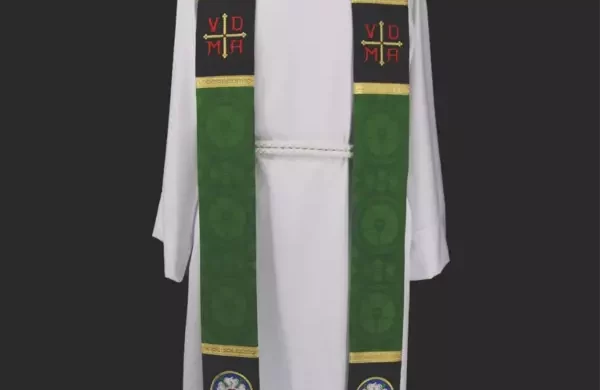
Get ready for ordination season with our diverse selection of custom-tailored liturgical stoles. We offer a variety of styles, sizes, and colors to suit everyone. Place your order early to ensure a perfect fit and make your special day unforgettable.
Like this:
Like Loading...
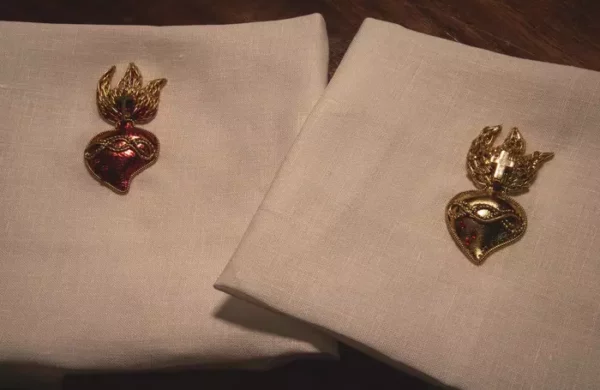
Exciting news! A collaboration between Clara of Clarastitching and a mystery partner brings a project revamping liturgical vestments, mostly free. Sacred Heart month marks its launch. Clara, an embroidery expert, offers workshops and project kits with free global shipping. Based in the UK, her influence extends to South America. Follow her on Instagram for inspiration and to join her vibrant community.
Like this:
Like Loading...
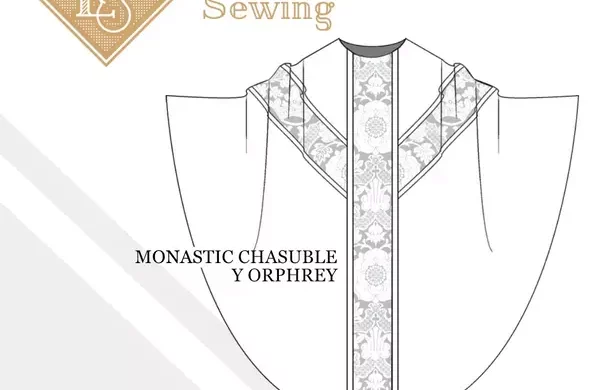
Introducing our Gothic Chasuble Sewing Pattern with a stylish “Y” orphrey design. Available in three sizes, it’s perfect for experienced seamstresses. Happy Sewing!
Like this:
Like Loading...
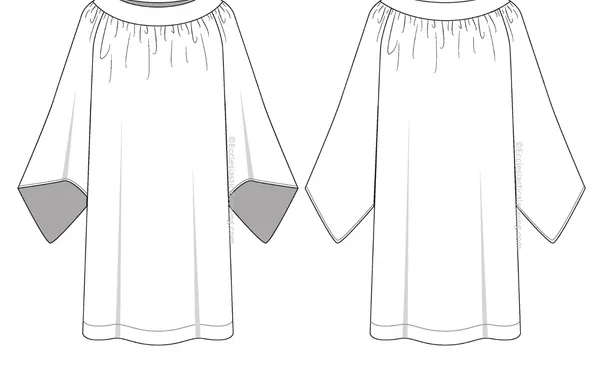
Discover our diverse range of surplice patterns, including Roman, lace insert, and Old English styles suitable for clergy, altar servers, and choir members. Crafted with precision and attention to detail, our patterns ensure beauty and accuracy in every project.
Like this:
Like Loading...
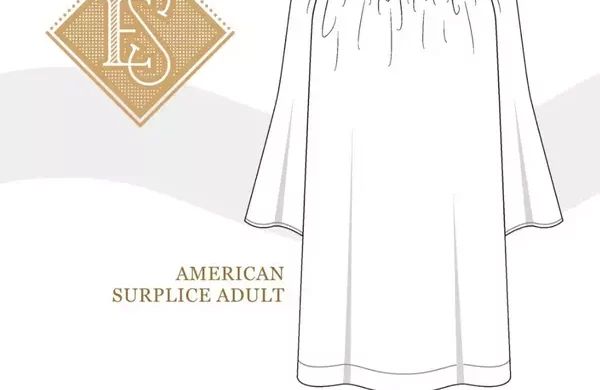
Explore our extensive collection of sewing patterns for crafting your own vestments! From timeless classics to a wide variety of designs, we’ve got you covered. Happy sewing!
Like this:
Like Loading...
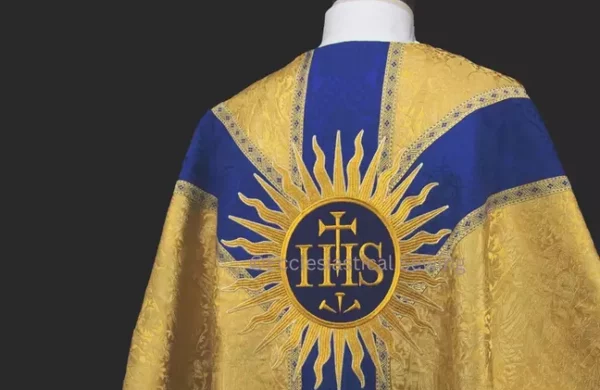
Keep stoles and vestments pristine with these tips: avoid washing, spot clean when necessary, and store in a cool, dark place. Prevent creasing and damage during travel, and don’t eat or drink while wearing them. With proper care, they can last over 50 years.
Like this:
Like Loading...
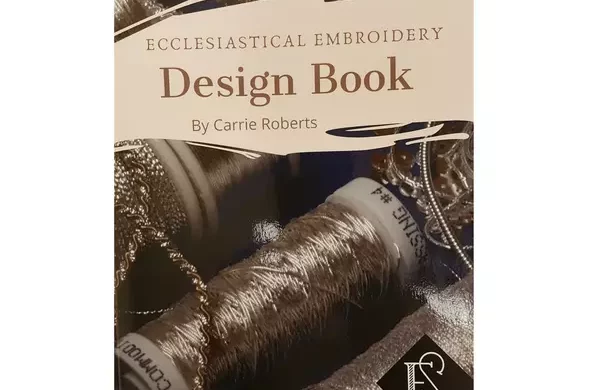
Discover our Ecclesiastical Embroidery Design Book, a treasure trove of over 180 beautifully curated designs perfect for crafting church vestments. From intricate crosses to elegant motifs, this collection includes patterns for every season of the church year, meticulously crafted from our studio and vintage archives. Elevate your embroidery with our comprehensive guide.
Like this:
Like Loading...
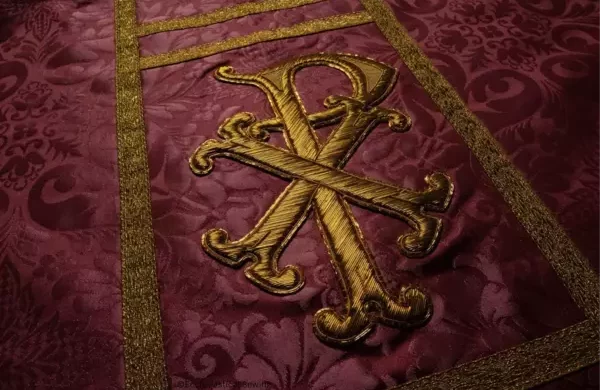
The Chi-Rho symbol, comprised of the Greek letters Chi (?) and Rho (?), represents “Christ” in Christianity. Legend has it that Roman Emperor Constantine the Great saw this symbol before a key battle, leading to his victory. Constantine’s embrace of Christianity and promotion of the symbol marked a turning point, contributing to the religion’s rise in the Roman Empire.
Like this:
Like Loading...
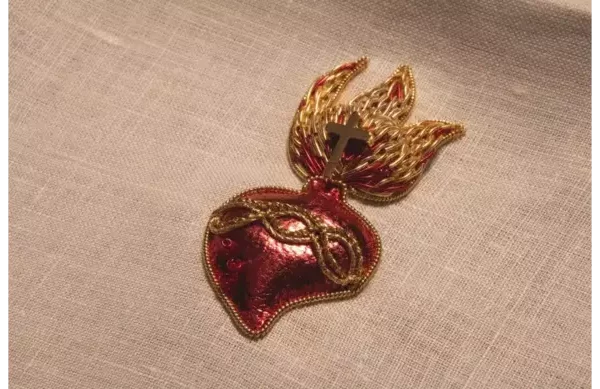
Join our Sacred Heart Month collaboration with Clara Stitching! Get a free Chalice Pal Pattern, grab discounted sewing kits (limited to 50), and don’t miss Clara’s free embroidery class on June 15th. Follow Clara on social media for updates!
Like this:
Like Loading...
















You must be logged in to post a comment.